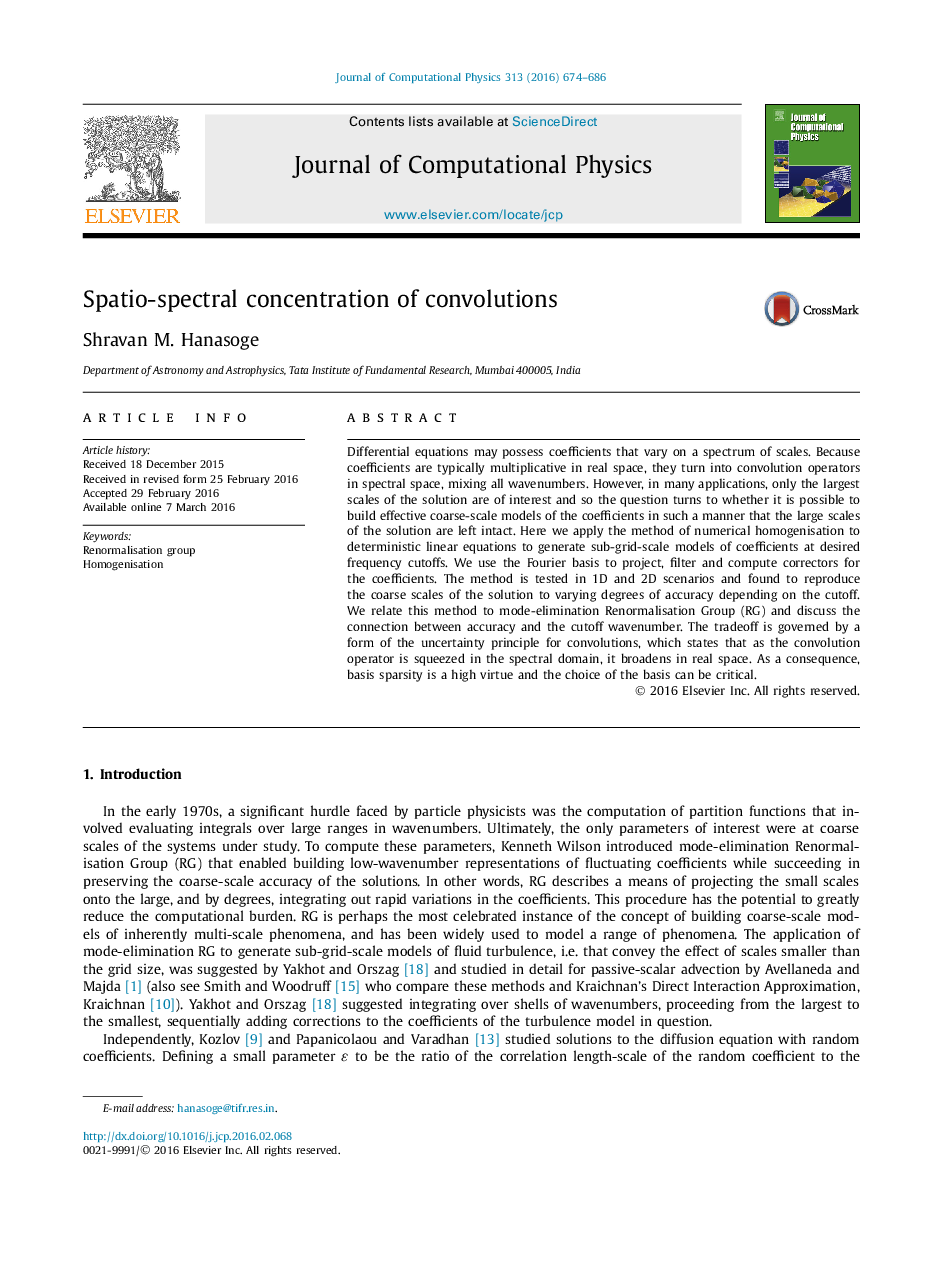| Article ID | Journal | Published Year | Pages | File Type |
|---|---|---|---|---|
| 519582 | Journal of Computational Physics | 2016 | 13 Pages |
Differential equations may possess coefficients that vary on a spectrum of scales. Because coefficients are typically multiplicative in real space, they turn into convolution operators in spectral space, mixing all wavenumbers. However, in many applications, only the largest scales of the solution are of interest and so the question turns to whether it is possible to build effective coarse-scale models of the coefficients in such a manner that the large scales of the solution are left intact. Here we apply the method of numerical homogenisation to deterministic linear equations to generate sub-grid-scale models of coefficients at desired frequency cutoffs. We use the Fourier basis to project, filter and compute correctors for the coefficients. The method is tested in 1D and 2D scenarios and found to reproduce the coarse scales of the solution to varying degrees of accuracy depending on the cutoff. We relate this method to mode-elimination Renormalisation Group (RG) and discuss the connection between accuracy and the cutoff wavenumber. The tradeoff is governed by a form of the uncertainty principle for convolutions, which states that as the convolution operator is squeezed in the spectral domain, it broadens in real space. As a consequence, basis sparsity is a high virtue and the choice of the basis can be critical.
